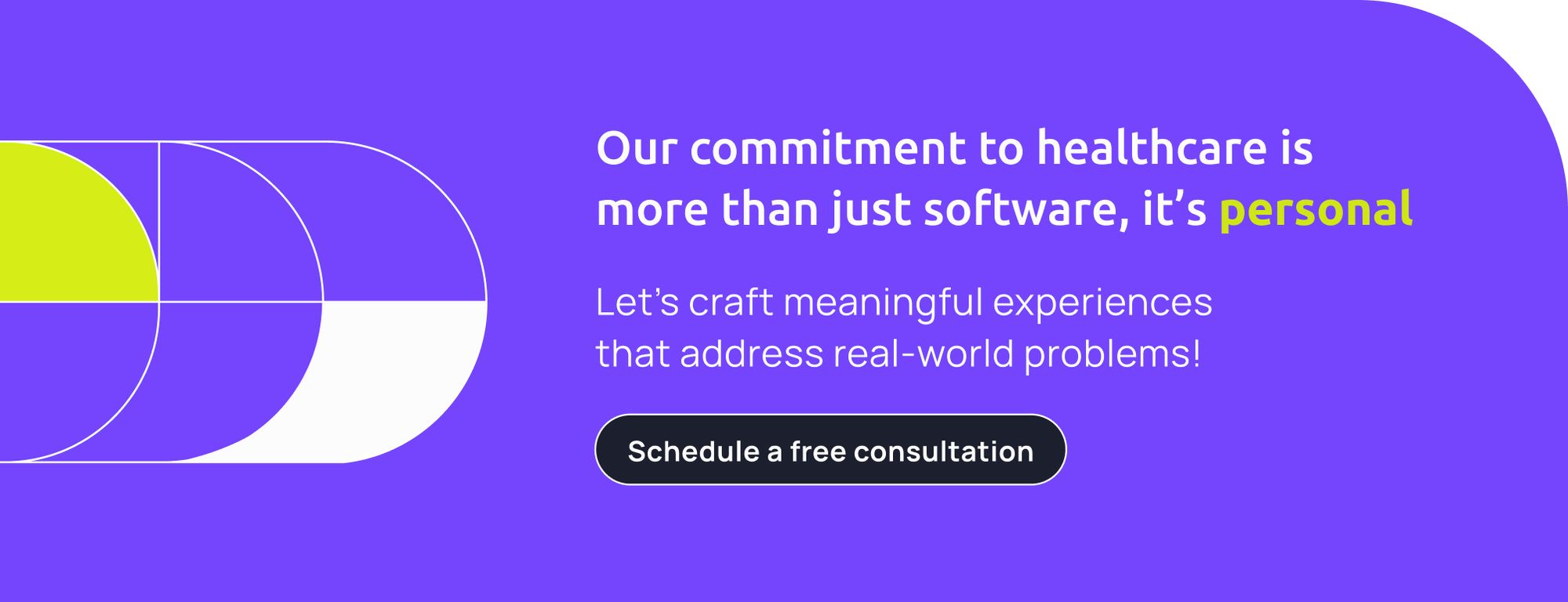Only a tiny percentage of the computing workforce, less than 25%, is made up of women, and this number has only slightly increased in the last few years.
As an industry of change, technology significantly impacts people's day-to-day lives. When men dominate decision-making and product development roles, it not only disadvantages women in the tech industry but also affects women in general.
“We are making products that are suited for everyone in the world”- Rumman Chowdhury
What does the Gender Gap in Tech mean?
The gender gap in tech refers to the unequal representation of men and women in the tech industry. Significantly fewer women are working in tech-related jobs than men around the world. This can manifest in many ways. Including lower rates of women studying computer science and other tech-related subjects, fewer women being hired for tech jobs, and a lack of women in leadership positions within tech companies.
Software is revolutionizing every aspect of our lives. That is why a very important part of the work of the future will require computer knowledge. Even though the number of students choosing Computer Science increases every year, the percentage of girls is still decreasing.
These numbers become even more significant when you compare them to past statistics. In the 1960s and 1970s, women held over 60% of technology positions. However, in recent years, there has been a steady decline in the representation of women in the technology industry. Today, the numbers reveal that in 2021, women made up only 25% of technology positions, highlighting the need for continued efforts to increase diversity and inclusion in the industry.

The Gender gap in the largest tech companies
Amazon, Meta, Apple, and Microsoft had higher women representation in their workforce in 2021 according to Statista, 2021, The percentage of employees in the technical workforce in big tech companies are:
- Microsoft -> 23% female.
- Google’s -> 25% female.
- Meta -> 24% female.
- Apple’s -> 24% female.
Which factors contribute to the Gender Gap?
- Unconscious biases and stereotypes about who is suited for certain types of work contribute to gender disparities. These biases lead to women being underrepresented in the tech field, despite their success. One of the most prevalent stereotypes is the association of men with work and women with family responsibilities, which creates a barrier for women to advance in their career, particularly in the male-dominated field of technology. These unconscious biases often influence hiring, promotion and mentoring decisions.
- The lack of female role models and mentors is one of the biggest challenges women face in the field. Did you know that only 22% of students can name a famous woman who works in technology? Historically, the industry has been male-dominated, which can make it difficult for women to find role models and mentors within the field. This can make it harder for women to envision themselves as successful tech professionals and may discourage them from choosing careers in tech.
- The lack of leadership roles in the field promotes the underrepresentation of women in the field. As one moves up the corporate ranks, the percentage of women in these positions drops significantly. To address this issue, it is essential that organizations actively seek out and hire diverse leaders from various backgrounds, including women. By having a diverse representation of women in leadership roles and throughout the organization, the culture of the company is transformed. This not only improves retention rates for women in the field, but also provides a sense of belonging and identification for women in higher ranks. Diverse leadership not only promotes inclusivity within the organization, but also drives innovation and competitiveness by introducing a diverse range of ideas and perspectives.
- Poor culture is the number one reason women leave tech. The culture within the technology industry is a major contributor to the lack of representation of women in the field. A significant percentage of female students report that the male-dominated culture of the industry has caused them to divert from pursuing a career in technology. The "bro culture" has long been a prevalent issue in the corporate world, but it is particularly prevalent in the technology hub of Silicon Valley. This culture, which is often characterized by a lack of inclusivity and a disregard for diverse perspectives, is a major reason why women are leaving the industry.
“Leadership defines culture and boundaries.” - Britney Crooks
When did “women’s work” become a “man’s world”?
Programming has not always been viewed as a field exclusive to men. In the early days of computing, programming was often considered as "women's work" as it was seen as a less skilled and less important role in comparison to hardware design and engineering, which were considered more prestigious and higher-paying roles. As a result, many of the first programmers were women, including Ada Lovelace, who is considered to be the world's first computer programmer and a pioneer in the field.
However, as the field of computing and technology developed and became more prestigious and lucrative, the gender dynamics within the field began to shift. Programming and other technical roles began to be seen as more valuable and prestigious, and the number of women in these roles began to decline. This trend has continued over time, leading to the significant gender imbalance that exists in the tech industry today. It is important to acknowledge that the underrepresentation of women in technology is not a natural state but rather a result of historical and cultural biases.
“You can only aspire to what you see. That’s why role modeling is important.” Regina Honu
Why bringing women into tech roles is good for society
- Greater diversity leads to more innovative and practical solutions to problems. When teams are diverse and inclusive, they are more likely to come up with new and innovative ideas and solve problems in more creative and effective ways. This is because diverse perspectives and experiences lead to a wider range of ideas and approaches, which can be more effective in solving complex problems.
- Increasing the representation of women in technology can help to break down gender stereotypes and promote equality, reducing discrimination and bias. This is important for creating a more fair and just society where everyone has the opportunity to reach their full potential.
- Women in tech can inspire more girls and young women to pursue careers in this field, leading to a more diverse and representative workforce in the long term. Research has shown that young girls and women are more likely to be interested in a career in technology when they see successful role models who look like them.
“Groups with greater diversity solve complex problems better and faster than homogenous groups. Culture isn't something you have, it's something you do.” - NCWIT
What needs to be done
Did you know that you can make a difference? If you haven’t started, this is what you can do:
- Encourage girls and young women in your life to consider careers in tech by sharing information about the field. You can also highlight successful women in tech as role models, encouraging open conversations about what it takes to succeed as a woman in tech. Also, supporting opportunities for girls and young women to explore their interests.
- Speak up against bias, stereotypes, and other factors that work against equality. If you witness or hear about instances of stereotypes or prejudices that contribute to the gender gap in tech, speak out against them. This can include challenging assumptions about who is suited for certain types of work or advocating for more inclusive policies and practices in your workplace.
- It is really hard to get funding for women leaders. If you want to help, fund women leaders, invest, mentor and support.
- Technology companies need to establish a culture of inclusivity and diversity in order to retain and attract a diverse workforce. A culture that values and encourages diversity will not only attract a wider range of qualified candidates, but it will also foster a more innovative and productive environment, leading to increased success for the company.
- Be an ally. It starts with you. If you are a man working in tech, there are many small things that you can do to help close the gender gap in your industry.
“Girls who have the combined support of parents and teachers are three times more likely to study computer science than girls who don’t have that support.”
How to reach the top
There is no doubt that companies can do more to promote gender diversity. But there are actions that you can do to reach the top:
- Make your ambition known and discuss your goals with managers and mentors
- Raise your hand for advancement on opportunities, even though you don’t feel qualified for them.
- Reach out within or outside your organization for opportunities to increase your skills
- Ensure to maintain long term relationships with your mentors and lean on them for support.
- Ask your manager for concrete feedback at least once each quarter.
- Don't work for a leader that does not see you as yourself, you have a choice, so choose people that are willing to see you
Organizations that are changing the game
Many organizations are dedicated to narrowing the gender divide in the technology sector. These organizations may offer resources, support, and networking opportunities to women in technology, as well as work to promote diversity and inclusivity in the industry as a whole:
Girls Who Code: This organization works to close the gender gap in technology by teaching girls in grades 6-12 to code and inspiring them to pursue careers in the field.
Girls in Tech: This organization provides support and resources for women in tech, including mentorship, networking opportunities, and educational programs.
Women Who Code: This global nonprofit organization works to inspire women to excel in tech careers by providing resources and support for women in the industry.
International Association of Women in Science, Engineering, and Technology (IAWISET): This organization works to promote the participation and advancement of women in science, engineering, and technology fields.
Association for Women in Science (AWIS): This organization works to advance the interests of women in science, technology, engineering, and math (STEM) fields through advocacy, education, and research.
These organizations play a vital role in helping us progress toward gender equality in the tech industry.
The future of women in tech
Changing the gender composition in tech will require a concerted effort from all sides. While there is a lot of work to be done, the good news is that change is coming — the bad news is that it's probably not going to come fast enough for everyone.


